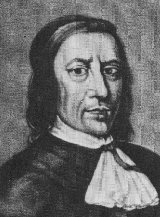

Baron Langdale was a title that was created twice in British history. The first creation came in the Peerage of England on 4 February 1658 when the prominent royalist commander of the English Civil War, Sir Marmaduke Langdale, was made by Baron Langdale, of Holme. He had fought alongside Prince Rupert and the Marquess of Newcastle at the Battle of Marston Moor, prior to the war he was the High Sheriff of Yorkshire and in later life a Catholic convert. His son, the second Baron, was Governor of Kingston-upon-Hull. The title descended from father to son until the death of the fifth Baron in 1777. He had no heir as his only son had died as an infant and the title became extinct on his death in 1777. The territorial designation "of Holme" refers to the family's chief seat, Holme Hall in the parish of Holme-on-Spalding-Moor, Yorkshire. The ancient surname of "Langdale" (originally de Langdale)[2] refers to the manor of Langdale in the hundred of Pickering in the County of York which Marmaduke's ancestors held as their seat from before the reign of King John (1199–1216).[3]
The second creation came in the Peerage of the United Kingdom on 23 January 1836 when Henry Bickersteth was made Baron Langdale, of Langdale in the County of Westmorland. He was appointed Master of the Rolls the same year. He had one daughter but no sons and the barony became extinct on his death in 1851. The evangelical clergyman Edward Bickersteth was the younger brother of Lord Langdale.
- ^ Robson, Thomas, The British Herald
- ^ Burke, John, General and Heraldic Dictionary of the Peerages of England, Ireland[1]
- ^ Burke, John (1831). A general and heraldic dictionary of the peerages of England, Ireland, and Scotland: Extinct, Dormant and in Abeyance. Oxford University.
langdale of holme.